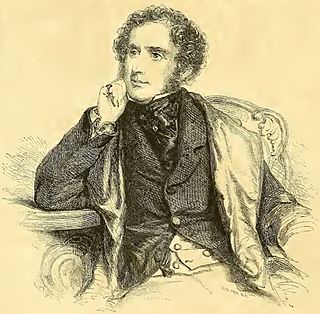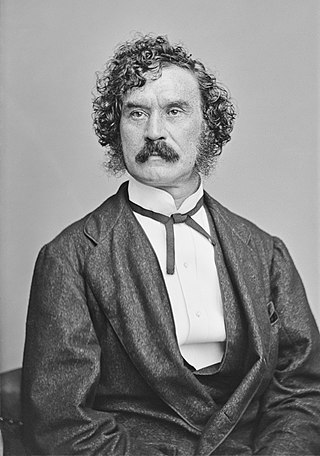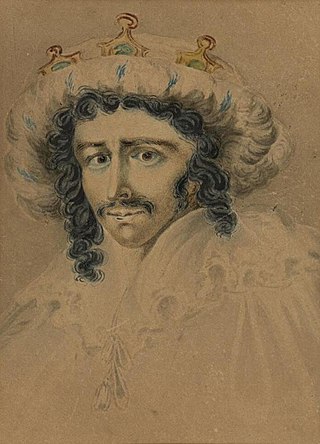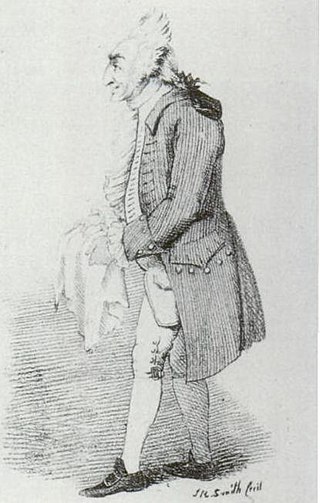Related Research Articles

Dionysius Lardner "Dion" Boucicault was an Irish actor and playwright famed for his melodramas. By the later part of the 19th century, Boucicault had become known on both sides of the Atlantic as one of the most successful actor-playwright-managers then in the English-speaking theatre. The New York Times hailed him in his obituary as "the most conspicuous English dramatist of the 19th century,"; he and his second wife, Agnes Robertson Boucicault, applied for and received American citizenship in 1873.

James William Wallack, commonly referred to as J. W. Wallack, was an Anglo-American actor and manager, born in London, and brother of Henry John Wallack.

John Johnstone Wallack, was an American actor-manager and son of James William Wallack and Susan Johnstone. He used the stage name John Lester until October 5, 1858, when he first acted under the name Lester Wallack, which he retained the rest of his career.

Laura Keene was a British stage actress and theatre manager. In her twenty-year career, she became known as the first powerful female manager in New York. She is most famous for being the lead actress in the play Our American Cousin, which was attended by President Abraham Lincoln at Ford's Theater in Washington on the evening of his assassination.

Lillian Russell was an American actress and singer. She became one of the most famous actresses and singers of the late 19th and early 20th centuries, praised for her beauty and style, as well as for her voice and stage presence.

William Dunlap was a pioneer of American theater. He was a producer, playwright, and actor, as well as a historian. He managed two of New York City's earliest and most prominent theaters, the John Street Theatre and the Park Theatre. He was also an artist, despite losing an eye in childhood.

Theater in the United States is part of the old European theatrical tradition and has been heavily influenced by the British theater. The central hub of the American theater scene is Manhattan, with its divisions of Broadway, Off-Broadway, and Off-Off-Broadway. Many movie and television stars have gotten their big break working in New York productions. Outside New York, many cities have professional regional or resident theater companies that produce their own seasons, with some works being produced regionally with hopes of eventually moving to New York. U.S. theater also has an active community theater culture, which relies mainly on local volunteers who may not be actively pursuing a theatrical career.
The Old American Company was an American theatre company. It was the first fully professional theatre company to perform in North America. It also played a vital role in the theatre history of Jamaica. It was founded in 1752 and disbanded in 1805. It was known as the Hallam Company (1752–1758), the American Company (1758–1785) and the Old American Company (1785–1805). With a few temporary exceptions, the Company enjoyed a de facto monopoly of professional theatre in the United States until 1790.

The Park Theatre, originally known as the New Theatre, was a playhouse in New York City, located at 21–25 Park Row in the present Civic Center neighborhood of Manhattan, about 200 feet (61 m) east of Ann Street and backing Theatre Alley. The location, at the north end of the city, overlooked the park that would soon house City Hall. French architect Marc Isambard Brunel collaborated with fellow émigré Joseph-François Mangin and his brother Charles on the design of the building in the 1790s. Construction costs mounted to precipitous levels, and changes were made in the design; the resulting theatre had a rather plain exterior. The doors opened in January 1798.

Thomas Wignell was an English-born actor and theatre manager in the colonial United States.

John Street Theatre, situated at 15–21 John Street, sometimes called "The Birthplace of American Theatre", was the first permanent theatre in the Financial District of Manhattan, New York. It opened on December 7, 1767, and was operated for several decades by the American Company. It closed on January 13, 1798.

John Hodgkinson was a well-known actor in the United States in the late 18th and early 19th century. He was born in England and came to the United States in 1792. William Dunlap and Hodgkinson managed the John Street Theatre together for a few years in the 1790s.
The Italian Father: A Comedy, in Five Acts (1799) is an American comedic play by William Dunlap, though substantially adapted from Part II of The Honest Whore by Thomas Dekker.
Giles Linnett Barrett was an English actor who came to the United States in the 1790s, and was most popular in Boston.
The Father; or, American Shandyism is a 1789 play by William Dunlap, his first published play, and according to Dunlap's later report, the second American comedy ever produced.

John Henry was an Irish-born actor and early American actor and theatre manager.

The Anthony Street Theatre was an early New York City theatre which operated intermittently from 1812 to 1821. It opened as the Olympic Theatre in May 1812 and had multiple names during its brief existence.

William Twaits was a British singer, dancer and actor-manager whose career was mostly in the United States in the early 19th-century.

Frances Brett Hodgkinson (1771–1803) was an English-born American theater actress. She played major roles in high comedy and tragedy plays and was also a noted performer of opera. She was the second wife of John Hodgkinson, a famous American stage actor.

Catherine Mary Reignolds-Winslow, often called Kate, and billed under her maiden name, was an English-American stage actress. She performed at the Broadway Theatre, the Chambers Street Theatre and Laura Keene's Theatre in New York City, and elsewhere.
References
- ↑ Singleton, Esther. Social New York under the Georges, 1714-1776, p. 283 (1902)
- ↑ Fifty-years of a Play-goer's Journal, pp. v (1860)
- 1 2 Ireland, Joseph N. Records of the New York Stage: From 1750 to 1860, Volume 1, p. 44 (1866)
- 1 2 Sonneck, Oscar. Early Opera in America, Volume 2, pp. 37-38 (1915)
- ↑ Dunlap, William. [History of the American Theatre, Vol. 1], p. 54 (1833)
- ↑ Abstracts of Wills, Vol. XV, p. 190 (1907) (Transcription of Woolls' will)